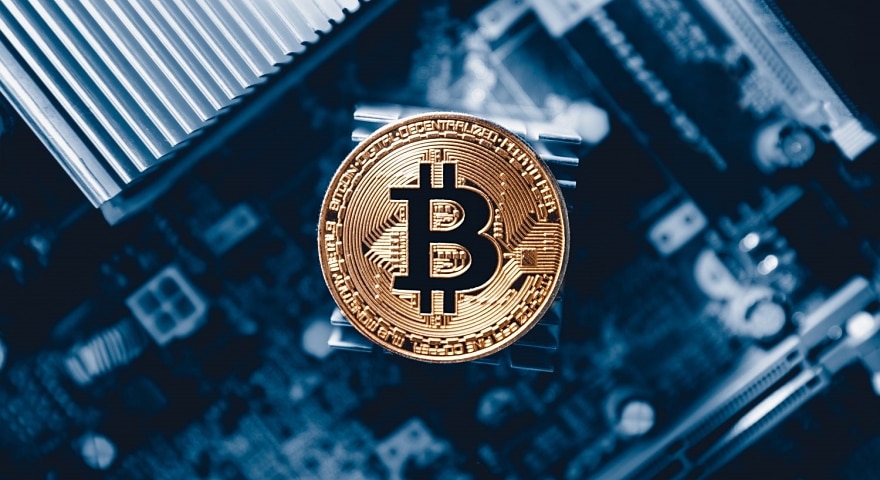
The Bitcoin halving happened this Monday, May 11th, and the crypto community is in a frenzy. Here are 5 facts every digital asset investor should know about the Bitcoin halving.
The Mining Reward Is Now 6.25 BTC
 which.co
which.co
A halving is a programmed update to the underlying network which manages the supply of all new Bitcoin. The miners of the network use their computing resources to find solutions to the complex math problems in order to validate Bitcoin transactions. The miner who first finds the solution to the algorithm gets the block reward, i.e., the bitcoins in the new block that has been validated.
As it is implied by the name, the halving reduces the number of Bitcoins per each block mined by half. Up until this Monday, the block reward was 12.5 BTC, but now, up until sometime in 2024, Bitcoin miners will get 6.25 BTC for every block they mine.
It Regulates the Supply
The supply of Bitcoin is controlled by its underlying protocol, and this mathematical function is scheduled to reduce the Bitcoin production number by two, almost every 4 years or every 210.000 blocks.
In 2009, the reward was initially 50 Bitcoins per block, and, during the first four years, 10.500.000 Bitcoins were generated. After another 4 years, the block was down to 25, and 5.250.000 Bitcoins were generated in that period.
During the third period prior to the halving, 2.625.000 Bitcoins were mined, totaling a circulation supply of 18.375.000 Bitcoins. The rest of the 2.638.700 Bitcoins will be generated in the next 100 years.
In Each of Its Halvings Bitcoin Generated Earnings of 12,000%-13,000%
 inspirationfeed.com
inspirationfeed.com
The price of Bitcoin has been impacted differently by each of its halvings because of the reduction in supply, generating huge revenues for every digital asset investor that bought the coin early on. After the first halving on 12 November 2012, it took 513 days for bitcoin to shoot up from $12 to $270 in April of the following year, marking an increase of 13,304%. 524 days after the 2nd halving on 16th June 2016, the coin went from $696 to nearly $20.000, which meant an increase of 3.200%. It took BTC 1068 days to increase with 12,168% from its second pre-Halving bottom of $164.01 to its post-Halving high of $20,074.04.
We can notice that from the lowest pre-halving value to the highest post-halving value, there has been an increase of approximately 12,000–13,000% in both cases.
But the main difference is that the second time it took Bitcoin twice as long to rally the same percentage. From this, it is expected that after the third halving, it will take much longer to notice the same percentage of gains if the same pattern is to be followed.
Even though there is always a bull rally a few months prior to the halving event, immediately, a correction occurs. In the previous two halvings, Bitcoin’s price also rallied and slumped afterward.
There is always a period of accumulation after a bear market, which is then followed by a period of expansion in price. In 2019, the bear period occurred between December and March 2019, and then the expansion period occurred between March and June, with the price of BTC surging from $5000 to $13,750.
After the expansion phase, there is another accumulation period, which is a sign of a bull market.
As a digital asset investor, monitoring the price of bitcoin and its possible long-term evolution is essential, as it also impacts the rest of the altcoin market.
Mining Impacted, but Miners Planned in Advance
It is obvious that miners and mining will be the ones directly impacted by the halving. As a consequence, the hash rate that keeps the network secure and the transactions validated will also be impacted. Miners will experience a sharp decrease in profits if the price per Bitcoin doesn’t increase. If they mine at the same difficulty as now, they will spend the same money on computing one block but get fewer Bitcoins, which means less profit.
In past instances, the price of Bitcoin adjusted itself; only the process was not immediate. As miners will be less motivated to mine new blocks while the price of Bitcoin reaches this equilibrium, the hash rate will also decrease.
However, most mining is now operated by large organizations that have taken the necessary precautions and investments in their mining infrastructure, anticipating this decrease.
After the first halving, the Bitcoin hash rate dropped with 34% in just a few days, but then, on Feb 17 2013, the hash rate reached 29 TH/s months later after the event.
The second halving didn’t impact Bitcoin’s hash rate as much, with miners being able to mitigate the reduction, as the price of BTC was slowly rising during that time.
If the network difficulty stays the same, and Bitcoin’s price goes up, miners are expected to stay on the network and keep the same hash rate. With higher prices, new miners might be motivated to enter the network.
There Are Actually Less than 21M BTC
 coindesk.com
coindesk.com
The 21 million Bitcoin limit is not an exact number, but a limit determined by mathematical rules. By these algorithms, it is anticipated that the last Bitcoin will be mined on October 8th, 2140. The actual supply of Bitcoins that can be spent is actually lower than the limit rule itself, with the actual number being slightly below 21 million.
Bitcoins can be rendered unspendable through various methods, such as losing the private keys to a bitcoin wallet or losing the hardware wallet in which they were stored. Bitcoin can also be lost by sending them to addresses that are not valid.
Conclusion
Without a doubt, the bitcoin halving is one of the most important events in the coin’s and crypto market’s history, and as such, every digital asset investor, regardless of the coins he has in his portfolio, should be aware of its impact and consequences.
Featured image: medium.com

coindoo.com is author of this content, TheBitcoinNews.com is is not responsible for the content of external sites.
Our Social Networks: Facebook Instagram Pinterest Reddit Telegram Twitter Youtube










